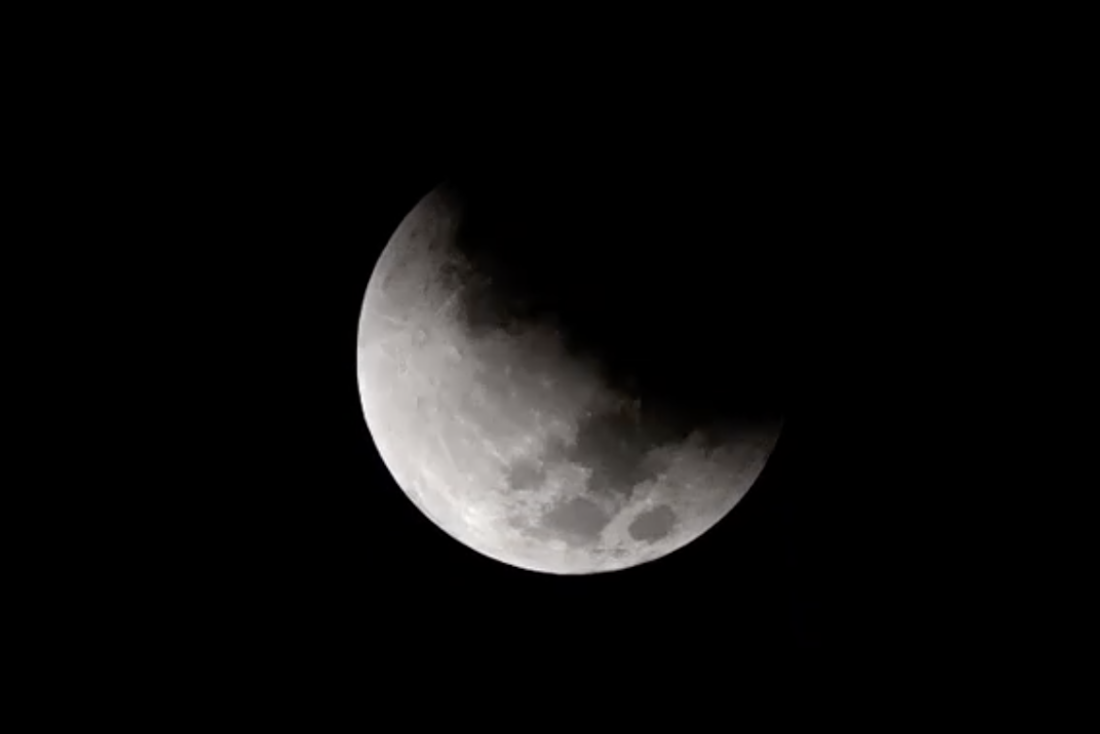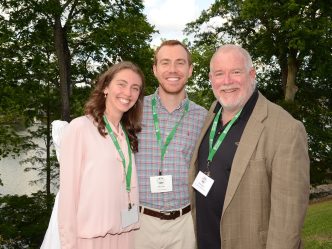In the early morning of Nov. 19, when most North Americans were asleep, Dr. Nathan Yanasak was wide awake, focusing intently on a phenomenon in the night sky.
An associate professor in Augusta University’s Department of Radiology at the Medical College of Georgia, Yanasak also has expertise in astrophysics and actively pursues a hobby in astrophotography. That night, he was capturing images of the moon as it passed through Earth’s shadow, gradually obscuring the moon from view.
Known as a lunar eclipse, this phenomenon occurs infrequently. Yanasak knew this lunar eclipse was particularly rare. Lasting over six hours, the eclipse was the longest of its kind in 580 years.
Yanasak completed his doctoral dissertation on cosmic-ray astrophysics at the University of Utah. For several years, he has taught an astronomy course in the College of Science and Mathematics as an adjunct faculty member.
Yanasak often posts photos on his Instagram account to pique interest in his course. It focuses on stars, the universe and the cosmos.
Even though each eclipse he has encountered in the past is unique in its own right, Yanasak said that during this eclipse, the moon was almost at its apogee, meaning the farthest distance from Earth. As a result, it appeared to move across the sky more slowly, making the shadow of the Earth more easily cover the distant moon.
Yanasak listed several factors that would impact the eclipse’s duration, including the location where the shadow may graze the moon and how close the moon is from Earth. He also noted that the November eclipse was not completely full; the earth’s shadow covered a maximum of 98% of the moon.
“The umbral lunar eclipse, or the eclipse phase where the moon is noticeably dark and looks like someone took a bite out of the moon, occurred from 2:18-5:47 a.m. on Nov. 19,” he said.
Yanasak wasted no time to prepare to capture the eclipse and “stayed up until about 4:30 a.m., just past the maximum at 4:02 a.m.” for this event.
To capture the lunar eclipse, he set up tripods and a table outside his Raytown house the night before, where there is minimal light pollution. According to the 2010 census, Raytown, Georgia, in Taliaferro County, has a population of 1,611. This makes it the second-least populated county east of the Mississippi River.
To capture the video above, Yanasak mounted his camera on what’s known as an equatorial mount tripod with a motor, which allowed his camera to track the sky at the rotational speed of the Earth. He also set up a laptop to snap a photo every 2 minutes, starting at about 2 a.m. until a little before 4 a.m.
“When totality was getting near, the exposure needed to be lengthened, so that accounts for the segment in the movie where the brightness suddenly increases,” he said. Yanasak had manually increased the exposure until he was satisfied with it.
In the footage, the moon appears to move bit by bit upward. Yanasak explained that the movement is caused by the difference in the speed of Earth’s rotation on its axis and the moon’s orbital speed. After shooting the pictures, he used his software skills to write code and stack them into a movie.
For the footage above, he took a GoPro Hero 5 camera and used it in night-lapse mode. This mode lets him shoot photos with an exposure time of 30 seconds, which is why the photos appear bright before the eclipse. This camera shot photos from around 2 a.m. to 5:30 a.m.
“One of the interesting experiences with lunar eclipses in dark, rural places is to see how much the darkness of the sky changes during the event. Before an eclipse, the full moon is bright enough to allow you to read a book; during the eclipse, the sky is almost as dark as if there were no moon at all,” he said.
After turning this stack into a movie, Yanasak applied further image processing to integrate pixels across the photo along a line that crosses the moon’s path into one final picture. For comparison, it shows a history of how bright and dark the scene was during the transit.
Another cosmic event, Comet Leonard, will be visible to the naked eye on Dec. 12, when it reaches its closest approach to Earth. Comet Leonard is scientifically known as “C/2021 A1” and was named after its discoverer, Greg Leonard.
“You can certainly see it with binoculars and clearly with a long-exposure camera, but seeing a comet with the unaided eye can be difficult because comet brightness and appearance can be very unpredictable,” Yanasak said. He still recommends that everyone take any chance to observe a comet that may be visible, as it could be a dramatic show.
“Currently, the comet is out in the early morning sky, getting brighter and lower in the sky as we approach Dec. 12,” Yanasak said. “A couple of days after the 12th, it will be out in the evening sky low in the sky, close to Venus, which currently appears as a very bright object in the West. It might be bright enough to see with your eyes at that point.”
It takes time to travel through the solar system; the comet had been traveling through the outer system for a while. Generally, comets start showing tails when they get approximately to the orbit of Jupiter.
“I just started looking for it where we expect to see it, and there it was. I’ve seen it a few times, starting in early November. It’s a very dark patch of the sky, so there are a few stellar ‘landmarks’ that you can use to find it,” Yanasak said.
This comet last came by Earth over 70,000 years ago; however, there is uncertainty about the exact time it last visited. Yanasak urged everyone to enjoy it while it lasts because it is leaving the solar system for good after this close encounter with the Sun.
 Augusta University
Augusta University





